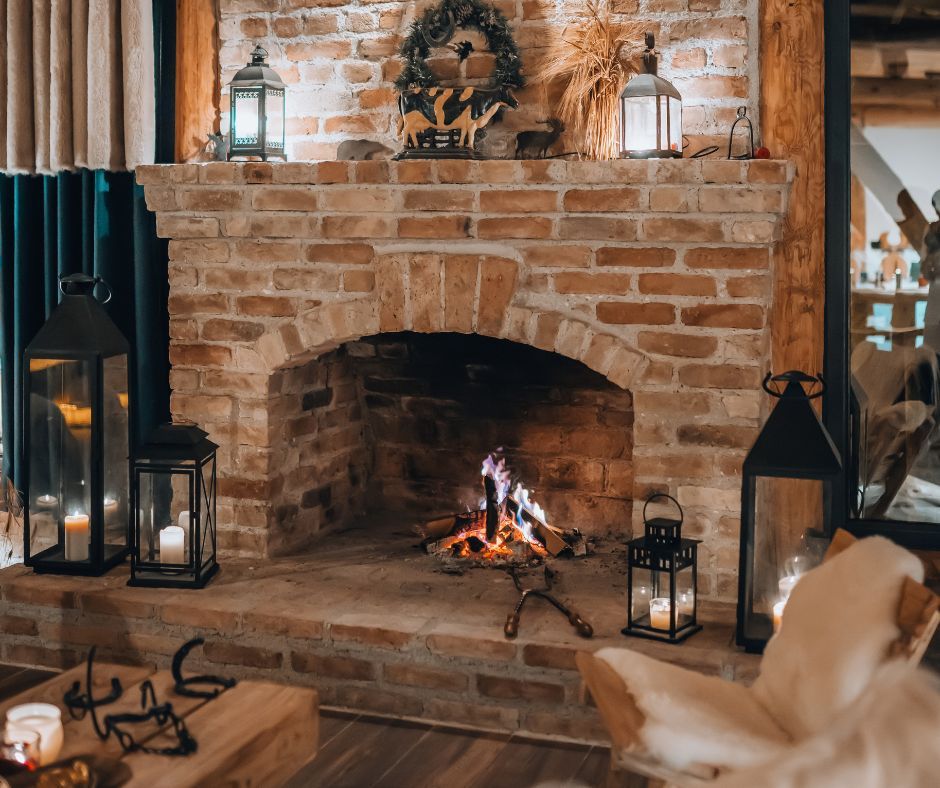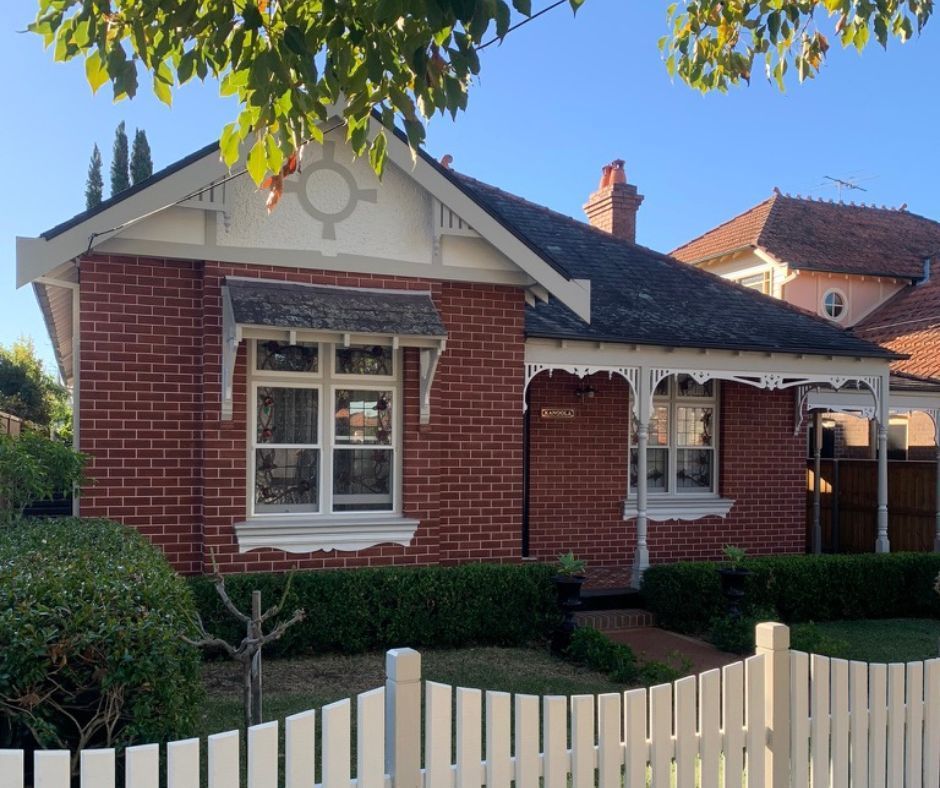Case Study: How We Performed an Old Brick Building Restoration On A Block Of Units in Cremorne Point
Cremorne Point sits right on Sydney Harbour’s Lower North Shore. Salt on the breeze, ferries sliding past and century-old unit blocks carry the neighbourhood’s heritage character. It’s a beautiful place for heritage masonry, but the coastal conditions are unforgiving.
This Cremorne Point case study shows what an old brick building restoration can do for a tired façade to full strength and keep that heritage look intact.The black-brick, black-mortar old block unit building was battling leaks, damp, mould and lintel failure.
Keystone Pointing Sydney team stepped in to plan and deliver a reliable fix, proof that restoring old brick buildings needn’t mean changing their character, only reviving it for the next 100 years.
Why Masonry Building Restoration Matters for These Cremorne Point Units
Sydney’s waterfront conditions had taken a quiet but steady toll on this old black-brick building. Salt-laden air accelerated decay, letting wind-driven rain creep through the front façade and into the interiors.
At a glance, the issues were:
- Salt-laden air had accelerated the deterioration of mortar, lintels and brickwork across the front elevation.
- Open, weakened mortar joints on the front façade allowed water ingress through the brickwork.
- Failed concrete lintels had started to expand, pushing the roofline out of alignment and stressing surrounding brickwork.
Compromised joints and failing lintels meant the façade was no longer reliably weather-tight. That threatens structural integrity, especially around the openings, and translates to uncomfortable, unhealthy living conditions because of musty interiors, recurring damp and ongoing repair bills. In short, the building needed timely masonry building restoration to prevent further movement and moisture damage.
Before contacting Keystone Pointing, the owners had also struggled to find licensed, trustworthy specialists who understood heritage-matched methods and could stand behind the work. The risk of an inexperienced fix was simply too high.
The owners discovered Keystone Pointing via our website and booked a site inspection. That first visit confirmed the root causes and we mapped out a comprehensive approach to make the façade water-tight and structurally sound again.
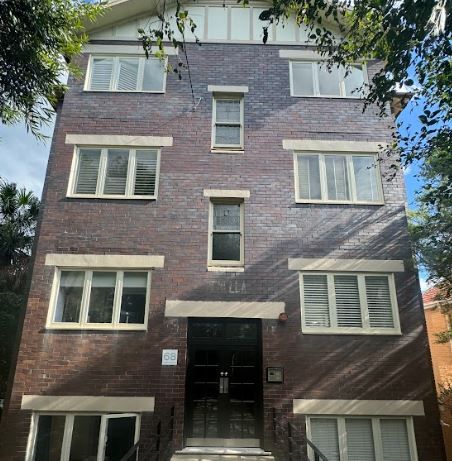
Findings of the Old Brick Building Restoration in Cremorne Point
Our first site visit to the Cremorne Point block confirmed what the owners suspected. A thorough walk-down, close-up joint probing and checks around openings made the picture clear.
What We Found During Inspection:
- Deteriorated mortar joints across the front façade.
- Lintels showed clear signs of failure and expansion, stressing adjacent brickwork and subtly distorting the roofline
- Internal damp and mould consistent with moisture penetrating through the brickwork on the front elevation.
How We Identified the Damage:
Through a close inspection of the front façade, joints and adjoining internal areas, our team noted recessed/crumbling joints, damp and mould due to water ingress, and subtle roofline distortion consistent with lintel failure, clear triggers for old brick building restoration to stop further movement and moisture ingress.
Professional assessments on older buildings are essential because hidden defects rarely show their full extent at first glance. A
licensed specialist can diagnose load-path issues, map moisture ingress and specify compatible materials and sequencing so repairs don’t trap salts or damage brick faces. This expert groundwork ensures that restoring old brick buildings is done once, done right and preserves both structural integrity and heritage character.
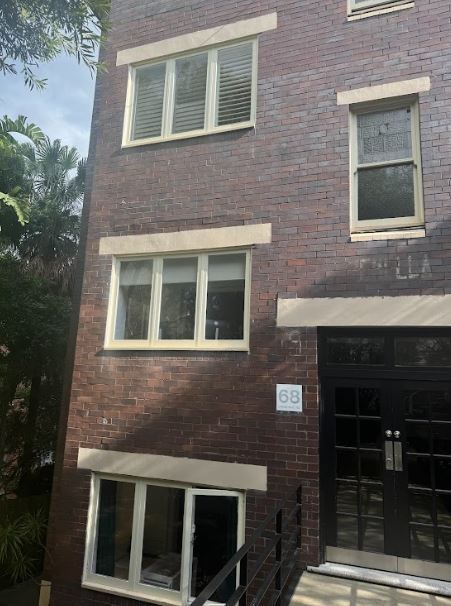
Our Proposed Solution for the Old Brick Building Restoration in Cremorne Point
Following the inspection, our team designed a tailored plan that addresses the root causes, not just the symptoms. As specialists in masonry building restoration, we planned a sequence that restores weather-tightness, corrects structural weaknesses and preserves the building’s black-brick character.
Our Tailored Plan:
Scaffold the Full Front Façade for Access
Erect a full-height scaffold to provide safe, continuous access across the elevation, protect residents and passers-by and allow methodical work sequencing from top to bottom without patchy, stop-start repairs.
Repoint the Full Elevation
Rake out defective joints to sound mortar, wash down and repoint the entire façade in a black mortar matched for strength, permeability and colour, finished to the original half-round profile. A full-elevation repoint ensures consistent weather-tightness and a seamless appearance.
Rebuild Sections of Damaged Brickwork
Where joints or bricks are beyond salvage, carefully dismantle and rebuild localised areas to restore coursing, bond and alignment, salvaging original bricks where viable to maintain heritage character.
Remove and Replace Concrete Lintels
Prop the roof above openings, remove render to expose failed lintels, extract deteriorated units, install new high-strength pre-stressed concrete lintels, then rebuild over and reinstate the render to a clean, straight line.
Keystone Pointing’s approach intentionally balances structure, aesthetics and long-term durability. The result is an old brick building restoration that preserves the black-brick character of the building, reliably water-tight and safeguarding its structural integrity for decades.
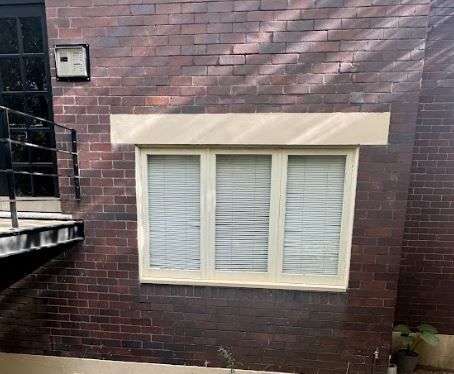
Our Step-By-Step Process for Restoring the Old Brick Buildings in Cremorne Point
Our method is sequenced to fix root causes and protect the building’s character. In coastal Sydney conditions, precise, material-compatible steps are the difference between cosmetic patching and durable masonry building restoration.
Mortar Removal
We rake out defective joints with purpose-built cutting tools connected to Class-M dust extraction, stopping at sound mortar and preserving brick faces. This removes salt-laden, friable material and creates a clean, keyed joint ready for new work.
Surface Preparation
After raking, we wash down the elevation to clear fines and contaminants. A controlled pressure wash reveals true brick colour, improves adhesion and ensures the new mortar bonds into a clean, consistent substrate.
Repointing
We repoint the full façade in black mortar, matched for strength, permeability and colour. Joints are compacted and tooled to a half-round profile for a crisp, heritage-true line that restores weather-tightness without visual disruption.
Lintel Replacement
Openings are safely propped before removing render to expose failed concrete lintels. We extract the deteriorated units, install new high-strength pre-stressed lintels and rebuild the brickwork.
Curing & Final Wash
With repointing complete, we allow controlled curing to achieve the designed performance, then conduct a final clean to remove residue and present uniform, sharp joints.
This end-to-end sequence delivers a seamless upgrade that preserves the black-brick aesthetic while locking in structural reliability and long-term durability.
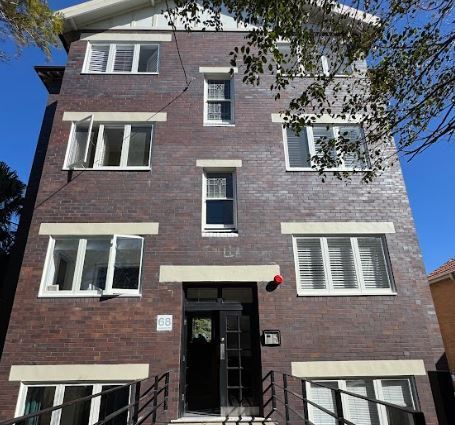
The Result of Our Precise Masonry Building Restoration
Executed as planned, this masonry building restoration delivered the outcome the building needed without changing the character.
End Outcome at a Glance:
Water-tight Façade:
Repointed joints now shed rain as intended, stopping moisture pathways and cutting off damp and mould at the source.
Structurally Sound with Durable Lintels:
New high-strength lintels re-establish correct load paths. The roofline reads straight and openings sit true.
Heritage Looks Preserved:
Black mortar with a half-round finish blends seamlessly with the original character.
The owners were thrilled with the workmanship, coordination and clean finish and have already booked Keystone Pointing to return for additional repointing and any further lintel replacements along the side elevations.

Book a Heritage Masonry Assessment in Sydney!
Seeing damp patches, crumbling joints or hairline cracks around windows? If your brick building shows similar signs, our Sydney team can help. We offer free, no-obligation assessments and clear, line-item proposals, so you know exactly what’s needed to make your façade water-tight while preserving its character.
Reach out to us and we’ll walk you through the next steps!
Key Takeaways
- Sydney’s coastal suburbs can accelerate mortar and lintel deterioration due to salt-laden air and wind-driven rain.
- Timely masonry building restoration prevents water ingress, structural damage and mould.
- Keystone Pointing offers trusted, heritage-matched repointing solutions tailored to restoring old brick buildings.
- A thorough, sequenced process delivers a long-term solution with minimal visual disruption.
Frequently Asked Questions
What causes mortar to deteriorate in coastal suburbs like Sydney?
Salt-laden air, wind-driven rain and daily temperature swings break down mortar over time. Previous hard or incompatible repairs can trap moisture and salts, accelerating decay. In harbour-side locations, these factors often trigger the need for old brick building restoration.
How do you know if your brick façade needs repointing?
Tell-tale signs include recessed or crumbling joints, hairline cracks around lintels, loose sand when you brush the joints, efflorescence (white salt crust) and internal damp or mould. If you notice several of these together, it’s time to consider restoring old brick buildings professionally.
What is the role of a lintel in a brick building?
A lintel spans door and window openings and transfers loads to the adjoining walls. In masonry building restoration, ensuring lintels are sound keeps rooflines straight, prevents cracking above openings and protects surrounding brickwork.
Can damaged lintels cause structural issues?
Yes. Failing lintels can distort the façade, open cracks, misalign windows and doors and invite leaks. Professional replacement restores the correct load path and stability.
What is black mortar and when is it used?
Black mortar is a pigmented mix chosen to match existing work or a heritage aesthetic. Beyond colour, it must be compatible in strength and permeability with the original character. We specify and test mixes to achieve a like-for-like finish as part of old brick building restoration.
What are the signs of water ingress in brick buildings?
Look for damp patches, peeling or bubbling paint, musty odours, mould growth and efflorescence. These indicate that the façade isn’t shedding water properly.
How much does an old brick building restoration cost in Sydney?
It depends on various factors. For an accurate quote tailored to your building needs, please contact our team to arrange a site inspection.
Why is it important to hire licensed professionals for heritage restorations?
Older buildings demand compatible materials, correct sequencing and careful detailing to avoid unintended damage. Licensed specialists document the scope, meet safety and compliance standards and stand behind the work. Reach out to our team if you’d like guidance on your specific property.

